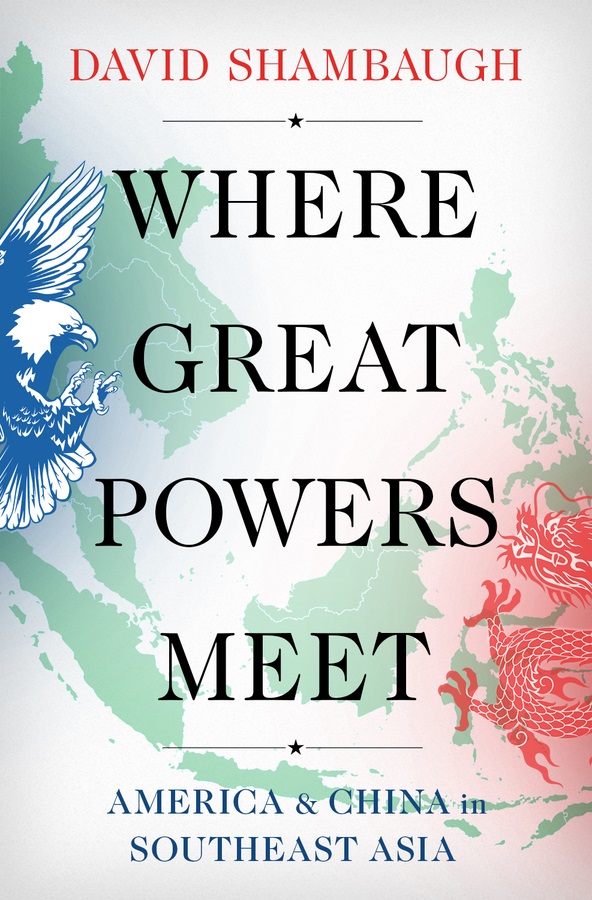Where Great Powers Meet: America and China in Southeast Asia
After the end of the Cold War, it seemed as if Southeast Asia would remain a geopolitically stable region within the American imperious for the foreseeable future. In the last two decades, however, the re-emergence of China as a major great power has called into question the geopolitical future of the region and raised the specter of renewed of great power competition.
As the eminent China scholar David Shambaugh explains in Where Great Powers Meet, the United States and China are engaged in a broad-gauged and global competition for power. While this competition ranges across the entire world, it is centered in Asia, and in this book, Shambaugh focuses the ten countries that comprise Southeast Asia. The United States and China constantly vie for position and influence in this enormously significant region-and the outcome of this contest will do much to determine whether Asia leaves the American orbit after seven decades and falls into a new Chinese sphere of influence. Just as importantly, to the extent that there is a global "power transition" occurring from the US to China, the fate of Southeast Asia will be a good indicator. Presently, both powers bring important assets to bear. The US continues to possess a depth and breadth of security ties, soft power, and direct investment across the region that empirically outweigh China's. For its part, China has more diplomatic influence, much greater trade, and geographic proximity. In assessing the likelihood of a regional power transition, Shambaugh at how ASEAN (the Association of Southeast Asian Nations) and the countries within it maneuver between the United States and China and the degree to which they align with one or the other power.
Not simply an analysis of the region's place within an evolving international system, Where Great Powers Meet provides us with a comprehensive strategy that advances the American position while exploiting Chinese weaknesses.
As the eminent China scholar David Shambaugh explains in Where Great Powers Meet, the United States and China are engaged in a broad-gauged and global competition for power. While this competition ranges across the entire world, it is centered in Asia, and in this book, Shambaugh focuses the ten countries that comprise Southeast Asia. The United States and China constantly vie for position and influence in this enormously significant region-and the outcome of this contest will do much to determine whether Asia leaves the American orbit after seven decades and falls into a new Chinese sphere of influence. Just as importantly, to the extent that there is a global "power transition" occurring from the US to China, the fate of Southeast Asia will be a good indicator. Presently, both powers bring important assets to bear. The US continues to possess a depth and breadth of security ties, soft power, and direct investment across the region that empirically outweigh China's. For its part, China has more diplomatic influence, much greater trade, and geographic proximity. In assessing the likelihood of a regional power transition, Shambaugh at how ASEAN (the Association of Southeast Asian Nations) and the countries within it maneuver between the United States and China and the degree to which they align with one or the other power.
Not simply an analysis of the region's place within an evolving international system, Where Great Powers Meet provides us with a comprehensive strategy that advances the American position while exploiting Chinese weaknesses.

Publisher
Oxford University Press
ISBN
9780190914974
Publication date
1 Nov 2020 – 31 Dec 2020
Specialisation
Social Sciences
Theme
International Relations and Politics
Region
Global Asia (Asia and other parts of the World)